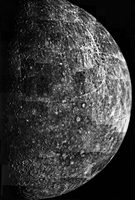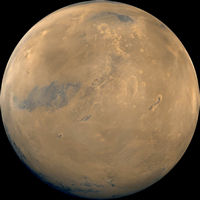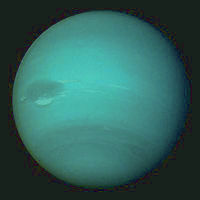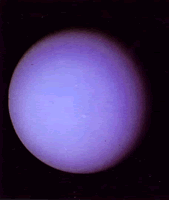| |

Space Development Consortium
...for
the future!
Our
Stellar System
 The
Sun of Scandia's solar system is called many things in many
different languages; it has no univresally recognised name,
even among astronomers. It is a fairly ordinary star, a medium
shade of yellow-orange. It is about three billion years old,
according to most estimates. It is about 650,000 times the
size of Scandia, and has a radius of approximately 1,200,000
km. The
Sun of Scandia's solar system is called many things in many
different languages; it has no univresally recognised name,
even among astronomers. It is a fairly ordinary star, a medium
shade of yellow-orange. It is about three billion years old,
according to most estimates. It is about 650,000 times the
size of Scandia, and has a radius of approximately 1,200,000
km.
|
 Tora,
a rock planet, is the innermost planet of the Scandian solar
system, and also the smallest. It was named by Kanjiri, and
means Tiger, a common feature of their mythology. It is a very
barren planet, and is highly irradiated, since its radiation-shielding
atmosphere would have been torn away by the sun's solar wind
(photons, electrons, and ions emitted by the sun in a constant
stream). Since it has no atmosphere to contain the immence heat
it acquires during the day, the nightime temperatures are as
low as the daytime temperatures are high. It has no satellites.
It is about two fifths the size of Scandia. Tora,
a rock planet, is the innermost planet of the Scandian solar
system, and also the smallest. It was named by Kanjiri, and
means Tiger, a common feature of their mythology. It is a very
barren planet, and is highly irradiated, since its radiation-shielding
atmosphere would have been torn away by the sun's solar wind
(photons, electrons, and ions emitted by the sun in a constant
stream). Since it has no atmosphere to contain the immence heat
it acquires during the day, the nightime temperatures are as
low as the daytime temperatures are high. It has no satellites.
It is about two fifths the size of Scandia. |
 Colossus
is the second planet of the solar system. Its name comes from
the Central Republic. It is a rock planet, but unlike Tora,
has an atmosphere. Colossus's atmosphere is very thick, containing
many toxic gases in a layer that permanently covers the surface.
This layer admits heat to the surface, but does not release
it, a perfect example of the so-called greenhouse effect. Colossus
is even hotter than Tora, despite being further from the sun.
It is about two thirds the size of Scandia. Colossus
is the second planet of the solar system. Its name comes from
the Central Republic. It is a rock planet, but unlike Tora,
has an atmosphere. Colossus's atmosphere is very thick, containing
many toxic gases in a layer that permanently covers the surface.
This layer admits heat to the surface, but does not release
it, a perfect example of the so-called greenhouse effect. Colossus
is even hotter than Tora, despite being further from the sun.
It is about two thirds the size of Scandia. |
 Lithos
is the third planet from the sun. It is about the same size
as Scandia, but has only a very thin atmosphere, not enough
for life. It is a dark greyish colour. Its name comes from Thesia,
where Lithos was the name of a major god. It has three moons,
but each of these is less than 20km in diameter and irregularly
shaped, making astronomers suspect that they are captured asteriods. Lithos
is the third planet from the sun. It is about the same size
as Scandia, but has only a very thin atmosphere, not enough
for life. It is a dark greyish colour. Its name comes from Thesia,
where Lithos was the name of a major god. It has three moons,
but each of these is less than 20km in diameter and irregularly
shaped, making astronomers suspect that they are captured asteriods.
|
 Scandia
is the planet we all live on. It has one large moon. Scandia
is the planet we all live on. It has one large moon. |
 Aeris,
named after one of the main goddesses of the mythology of Andrea,
is the fifth planet of the solar system. It is about three quarters
of Scandia's size, and is rock. Due to the iron oxides present
within its soil, it has a slightly reddish tinge. It has one
moon, probably a captured asteroid like those of Lithos. If
it does have an atmosphere, which is possible, it is very thin. Aeris,
named after one of the main goddesses of the mythology of Andrea,
is the fifth planet of the solar system. It is about three quarters
of Scandia's size, and is rock. Due to the iron oxides present
within its soil, it has a slightly reddish tinge. It has one
moon, probably a captured asteroid like those of Lithos. If
it does have an atmosphere, which is possible, it is very thin.
|
 Ausculta
is the first of the gaseous planets. Like all gas giants, Ausculta
is far larger than any of the rocky worlds. Its colour is a
deep blue-green, and is a very calm and slow world. It is believed
that in its core, there might be sufficient pressure to create
a solid from its gases, but this has never been proved. It has
a total of sixteen moons, at present count. The second-to-largest
of these is of interest due to speculaion that its surface is
not rock but ice, and that a vast ice-locked ocean lies beneath
it. Some astronomers believe that this would be the place to
look for life in the solar system, even if it is only bacteria
or algae. Ausculta's name comes from the ancient scriptures
that guide the monastaries of Maristerranea. Ausculta
is the first of the gaseous planets. Like all gas giants, Ausculta
is far larger than any of the rocky worlds. Its colour is a
deep blue-green, and is a very calm and slow world. It is believed
that in its core, there might be sufficient pressure to create
a solid from its gases, but this has never been proved. It has
a total of sixteen moons, at present count. The second-to-largest
of these is of interest due to speculaion that its surface is
not rock but ice, and that a vast ice-locked ocean lies beneath
it. Some astronomers believe that this would be the place to
look for life in the solar system, even if it is only bacteria
or algae. Ausculta's name comes from the ancient scriptures
that guide the monastaries of Maristerranea. |
 Elsciia
is the largest planet in the solar system, marginally larger
than Ausculta. It is an orange-red colour, and is encircled
by a large number of rings, believed to be particles of dust
and ice. It is a more turbulent world than Ausculta, most noticable
in the large storm perpetually raging near its southern pole.
Its consistancy is roughly the same as that of Asculta. It has
27 known moons. Elsciia is named after a famous battle in Katrinkan
history. Elsciia
is the largest planet in the solar system, marginally larger
than Ausculta. It is an orange-red colour, and is encircled
by a large number of rings, believed to be particles of dust
and ice. It is a more turbulent world than Ausculta, most noticable
in the large storm perpetually raging near its southern pole.
Its consistancy is roughly the same as that of Asculta. It has
27 known moons. Elsciia is named after a famous battle in Katrinkan
history. |
 Wöten,
the eighth planet, is named after a god from Reichstadt, is
the third largest gas planet. It is a yellowish colour, and
like Elsciia, is surrounded by rigns, more noticeable than Elsciia's
despite its smaller size. The gases that make it up are not
yet conclusively identified, although they are probably the
same as the previous two gas planets. At last count, it has
12 moons. Wöten,
the eighth planet, is named after a god from Reichstadt, is
the third largest gas planet. It is a yellowish colour, and
like Elsciia, is surrounded by rigns, more noticeable than Elsciia's
despite its smaller size. The gases that make it up are not
yet conclusively identified, although they are probably the
same as the previous two gas planets. At last count, it has
12 moons. |
 Kenkaria
is named after the principal deity of the Kenkarian religion
of the Larenian Empire, the goddess Kenkaria. It is a relatively
small planet for a gas giant, only about half the size of Elsciia.
Its colour is a sort of blue-purple, and it appears to be a
relatively settled planet. It has only one moon that astronomers
can detect, and has very faint rings too thin to see without
sophisticated instruments. Kenkaria
is named after the principal deity of the Kenkarian religion
of the Larenian Empire, the goddess Kenkaria. It is a relatively
small planet for a gas giant, only about half the size of Elsciia.
Its colour is a sort of blue-purple, and it appears to be a
relatively settled planet. It has only one moon that astronomers
can detect, and has very faint rings too thin to see without
sophisticated instruments. |
 Gelidia
is the outermost planet of the Scandian solar system, so distant
that some astronomers do not consider it a part of the system
at all. Due to its distance, it must be extremely cold, hense
its name, derived from the Valanian word for cold. Very little
is known about this planet. It is believed to be rocky. Gelidia
is the outermost planet of the Scandian solar system, so distant
that some astronomers do not consider it a part of the system
at all. Due to its distance, it must be extremely cold, hense
its name, derived from the Valanian word for cold. Very little
is known about this planet. It is believed to be rocky. |
|
|
|